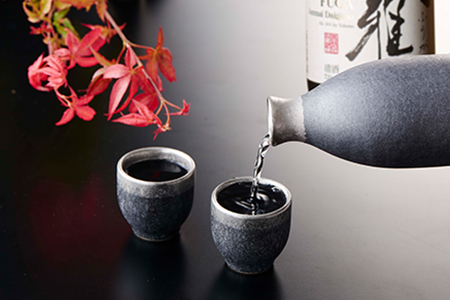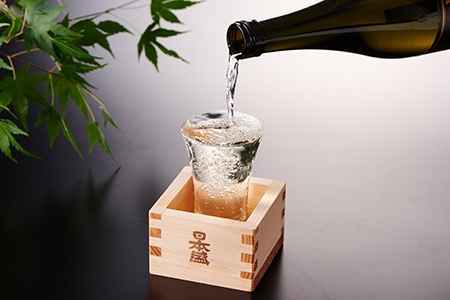WHAT’S SAKE?
Types and Serving Styles of Japanese Sake
Taste of Japanese sake varies depending on rice-polishing rate as well as sake-brewing process. Moreover, it changes according to the temperature. Sake can be served at room temperature, warmed or hot. You can enjoy sake in various styles, pairing with your favorite dishes or depending on your mood.
Types of Japanese Sake
Sake classified by material and rice-polishing rate
- Daiginjo
- Daiginjo (Super premium sake) Made from rice with rice-polishing rate of 50 percent or less and fermented at low temperature for a long time. It has fruity aroma, and tastes very delicate and dry.
- Ginjo
- Made from rice with rice-polishing rate of 60 percent or less, and fermented at low temperature for a long time. It has fruity aroma, and tastes delicate and dry.
- Junmai Daiginjo
- Made from only rice polished to less than 50 percent of its original size, malted rice and water, taking a long time for fermentation. It has fruity aroma and delicate flavor characterized by pure rice.
- Junmai Ginjo
- Made from only rice polished to less than 60 percent of its original size, malted rice and water, taking a long time for fermentation. It has fruity aroma and delicate flavor characterized by pure rice.
- Honjozo
- Made from rice with rice-polishing rate of 70 percent or less, malted rice, water and brewer’s alcohol. Tastes dry and refreshing. Considered as standard sake.
- Junmai
- Made from only rice, malted rice and water with no alcohol added. Displays flavor of rice on the palate. Full-bodied. Differs in aroma and body from Junmai Daiginjo-shu or Junmai Ginjo-shu.。
- Futsu-shuRegular sake
- Made with the addition of brewer’s alcohol. No regulation on the rice-polishing rate. All sake except for specially designated sake including Daiginjo-shu and Junmai-shu is referred to as Futsu-shu.
Sake classified by brewing method
- Nama Genshu
- Unpasteurized and undiluted. Gives fresh taste and flavor of sake itself. It has alcohol content higher than that of usual sake.
- Namazake
- Never pasteurized, so that it tastes fresh. Perishable. The expiration date is short.
- Namachozoshu
- Stored unpasteurized and pasteurized before bottling. Recommended to be served chilled.
Serving Styles of Japanese Sake
| Reishu | Chilled sake | 7~10℃ (44-50℉) |
|---|---|---|
| Jo-on | Sake served at room temperature |
15~25℃ (59-77℉) |
| Nuru-kan | Lukewarm sake | Sake warmed to human body temperature around 40℃ (104℉) |
| Jo-kan | Hot sake | around 45℃ (113℉) |
| Atsu-kan | Piping hot sake | around 50℃ (122℉) |
※Sake can be served both chilled and warmed. You can enjoy sake in various styles, ranging from sake on the rocks to extremely hot sake of 55℃ or above.




